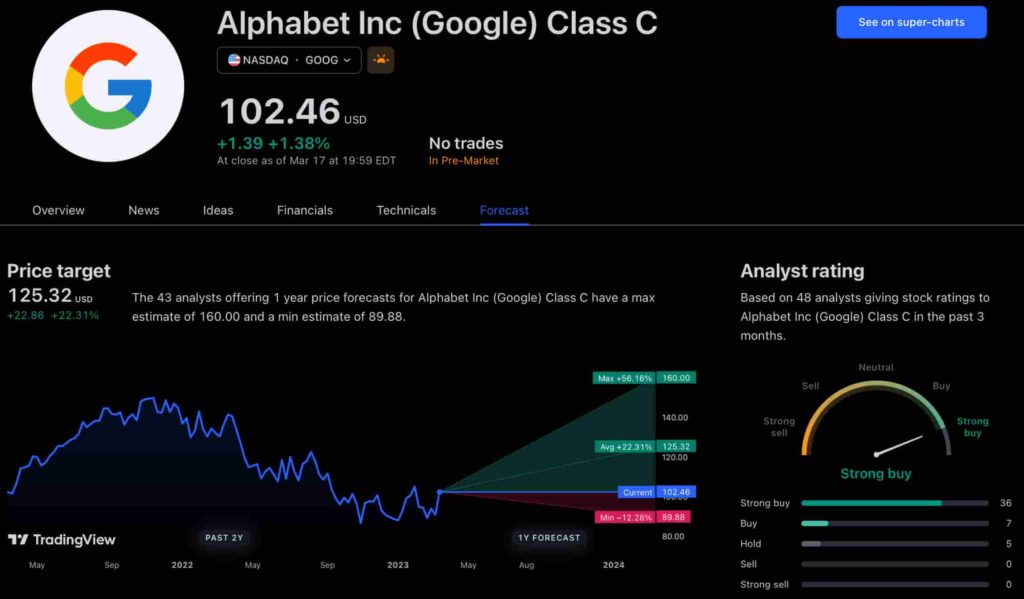The new app is called watchGPT and as I tipped off already, it gives you access to ChatGPT from your Apple Watch. Now the $10,000 question (or more accurately the $3.99 question, as that is the one-time cost of the app) is why having ChatGPT on your wrist is remotely necessary, so let’s dive into what exactly the app can do.
NEWS
Vulnerabilities in 17+ Elementor Add-on Plugins for WordPress via @sejournal, @martinibuster

Wordfence security researchers discovered that virtually every plugin tested that adds functionality to Elementor had a vulnerability. Many of the contacted plugin publishers updated their plugins but not all of them responded, including premium plugins.
The Elementor page builder plugin itself patched a similar vulnerability in February 2021.
This vulnerability affects add-on plugins for Elementor that are created by third parties.
Advertisement
Continue Reading Below
According to Wordfence:
“We found the same vulnerabilities in nearly every plugin we reviewed that adds additional elements to the Elementor page builder.”
So it seems that this vulnerability is fairly widespread within the third party plugins that are add-ons to Elementor
Stored Cross-Site Scripting Vulnerability
A stored cross-site scripting vulnerability is particularly problematic because the malicious script is uploaded to and stored on the website itself. Then when a user visits the affected web page the browser will execute the malicious script.
If the person visiting the site is signed in and has admin level access then the script could be used to provide that level of access to the hacker and lead to a total site takeover.
Advertisement
Continue Reading Below
This particular vulnerability allows an attacker with at least a contributor level permission to upload a script in place where an element (like a header element) is supposed to be.
The attack is similar to one that Elementor patched in February 2021.
This is how the Elementor vulnerability is described:
“…the “Heading” element can be set to use H1, H2, H3, etc. tags in order to apply different heading sizes via the header_size parameter.
Unfortunately, for six of these elements, the HTML tags were not validated on the server side, so it was possible for any user able to access the Elementor editor, including contributors, to use this option to add executable JavaScript to a post or page via a crafted request.”
List of Top Elementor Add-on Plugins Fixed
The list below of seventeen plugins for Elementor that were affected are installed on millions of sites.
Of those plugins there are over a hundred endpoints, which means that there were multiple vulnerabilities in each of the plugins where an attacker could upload a malicious JavaScript file.
The following list is just a partial one.
If your third party plugin that adds functionality to Elementor is not listed then it’s imperative to check with the publisher to make sure if it has been checked to see if it too contains this vulnerability.
Advertisement
Continue Reading Below
List of Top 17 Patched Elementor Plugins
- Essential Addons for Elementor
- Elementor – Header, Footer & Blocks Template
- Ultimate Addons for Elementor
- Premium Addons for Elementor
- ElementsKit
- Elementor Addon Elements
- Livemesh Addons for Elementor
- HT Mega – Absolute Addons for Elementor Page Builder
- WooLentor – WooCommerce Elementor Addons + Builder
- PowerPack Addons for Elementor
- Image Hover Effects – Elementor Addon
- Rife Elementor Extensions & Templates
- The Plus Addons for Elementor Page Builder Lite
- All-in-One Addons for Elementor – WidgetKit
- JetWidgets For Elementor
- Sina Extension for Elementor
- DethemeKit For Elementor
What to Do if You Use an Elementor Plugin?
Publishers using third party plugins for Elementor should make sure that those plugins have been updated to patch this vulnerability.
While this vulnerability requires at least a contributor level access, a hacker who is specifically targeting a site can leverage various attacks or strategies to obtain those credentials, including social engineering.
Advertisement
Continue Reading Below
According to Wordfence:
“It may be easier for an attacker to obtain access to an account with contributor privileges than to gain administrative credentials, and a vulnerability of this type can be used to perform privilege escalation by executing JavaScript in a reviewing administrator’s browser session.”
If your third party add-on plugin to Elementor has not recently been updated to patch a vulnerability you may want to contact the publisher of that plugin to ascertain if it is safe.
Citation
Recent Patches Rock the Elementor Ecosystem
Facebook Faces Yet Another Outage: Platform Encounters Technical Issues Again

Uppdated: It seems that today’s issues with Facebook haven’t affected as many users as the last time. A smaller group of people appears to be impacted this time around, which is a relief compared to the larger incident before. Nevertheless, it’s still frustrating for those affected, and hopefully, the issues will be resolved soon by the Facebook team.
Facebook had another problem today (March 20, 2024). According to Downdetector, a website that shows when other websites are not working, many people had trouble using Facebook.
This isn’t the first time Facebook has had issues. Just a little while ago, there was another problem that stopped people from using the site. Today, when people tried to use Facebook, it didn’t work like it should. People couldn’t see their friends’ posts, and sometimes the website wouldn’t even load.
Downdetector, which watches out for problems on websites, showed that lots of people were having trouble with Facebook. People from all over the world said they couldn’t use the site, and they were not happy about it.
When websites like Facebook have problems, it affects a lot of people. It’s not just about not being able to see posts or chat with friends. It can also impact businesses that use Facebook to reach customers.
Since Facebook owns Messenger and Instagram, the problems with Facebook also meant that people had trouble using these apps. It made the situation even more frustrating for many users, who rely on these apps to stay connected with others.
During this recent problem, one thing is obvious: the internet is always changing, and even big websites like Facebook can have problems. While people wait for Facebook to fix the issue, it shows us how easily things online can go wrong. It’s a good reminder that we should have backup plans for staying connected online, just in case something like this happens again.
NEWS
We asked ChatGPT what will be Google (GOOG) stock price for 2030

Investors who have invested in Alphabet Inc. (NASDAQ: GOOG) stock have reaped significant benefits from the company’s robust financial performance over the last five years. Google’s dominance in the online advertising market has been a key driver of the company’s consistent revenue growth and impressive profit margins.
In addition, Google has expanded its operations into related fields such as cloud computing and artificial intelligence. These areas show great promise as future growth drivers, making them increasingly attractive to investors. Notably, Alphabet’s stock price has been rising due to investor interest in the company’s recent initiatives in the fast-developing field of artificial intelligence (AI), adding generative AI features to Gmail and Google Docs.
However, when it comes to predicting the future pricing of a corporation like Google, there are many factors to consider. With this in mind, Finbold turned to the artificial intelligence tool ChatGPT to suggest a likely pricing range for GOOG stock by 2030. Although the tool was unable to give a definitive price range, it did note the following:
“Over the long term, Google has a track record of strong financial performance and has shown an ability to adapt to changing market conditions. As such, it’s reasonable to expect that Google’s stock price may continue to appreciate over time.”
GOOG stock price prediction
While attempting to estimate the price range of future transactions, it is essential to consider a variety of measures in addition to the AI chat tool, which includes deep learning algorithms and stock market experts.
Finbold collected forecasts provided by CoinPriceForecast, a finance prediction tool that utilizes machine self-learning technology, to anticipate Google stock price by the end of 2030 to compare with ChatGPT’s projection.
According to the most recent long-term estimate, which Finbold obtained on March 20, the price of Google will rise beyond $200 in 2030 and touch $247 by the end of the year, which would indicate a 141% gain from today to the end of the year.
Google has been assigned a recommendation of ‘strong buy’ by the majority of analysts working on Wall Street for a more near-term time frame. Significantly, 36 analysts of the 48 have recommended a “strong buy,” while seven people have advocated a “buy.” The remaining five analysts had given a ‘hold’ rating.

The average price projection for Alphabet stock over the last three months has been $125.32; this objective represents a 22.31% upside from its current price. It’s interesting to note that the maximum price forecast for the next year is $160, representing a gain of 56.16% from the stock’s current price of $102.46.
While the outlook for Google stock may be positive, it’s important to keep in mind that some potential challenges and risks could impact its performance, including competition from ChatGPT itself, which could affect Google’s price.
Disclaimer: The content on this site should not be considered investment advice. Investing is speculative. When investing, your capital is at risk.
NEWS
This Apple Watch app brings ChatGPT to your wrist — here’s why you want it

ChatGPT feels like it is everywhere at the moment; the AI-powered tool is rapidly starting to feel like internet connected home devices where you are left wondering if your flower pot really needed Bluetooth. However, after hearing about a new Apple Watch app that brings ChatGPT to your favorite wrist computer, I’m actually convinced this one is worth checking out.
-

 PPC6 days ago
PPC6 days ago19 Best SEO Tools in 2024 (For Every Use Case)
-

 MARKETING7 days ago
MARKETING7 days agoEcommerce evolution: Blurring the lines between B2B and B2C
-
SEARCHENGINES5 days ago
Daily Search Forum Recap: April 19, 2024
-
SEARCHENGINES6 days ago
Daily Search Forum Recap: April 18, 2024
-

 WORDPRESS6 days ago
WORDPRESS6 days agoHow to Make $5000 of Passive Income Every Month in WordPress
-

 SEO7 days ago
SEO7 days ago2024 WordPress Vulnerability Report Shows Errors Sites Keep Making
-

 WORDPRESS6 days ago
WORDPRESS6 days ago10 Amazing WordPress Design Resouces – WordPress.com News
-

 SEO6 days ago
SEO6 days ago25 WordPress Alternatives Best For SEO








![Astra Theme Coupon 2024 (Apr) [40% Discount, Save $400] Astra Pricing Plans on discounts](https://articles.entireweb.com/wp-content/uploads/2024/04/1713797772_611_Astra-Theme-Coupon-2024-Apr-40-Discount-Save-400-400x240.png)
![Astra Theme Coupon 2024 (Apr) [40% Discount, Save $400] Astra Pricing Plans on discounts](https://articles.entireweb.com/wp-content/uploads/2024/04/1713797772_611_Astra-Theme-Coupon-2024-Apr-40-Discount-Save-400-80x80.png)
![Elementor Pro Discount (Apr 2024) [70% OFF, Save $150] Elementor Coupon](https://articles.entireweb.com/wp-content/uploads/2024/04/1713729377_Elementor-Pro-Discount-Apr-2024-70-OFF-Save-150-400x240.png)
![Elementor Pro Discount (Apr 2024) [70% OFF, Save $150] Elementor Coupon](https://articles.entireweb.com/wp-content/uploads/2024/04/1713729377_Elementor-Pro-Discount-Apr-2024-70-OFF-Save-150-80x80.png)



